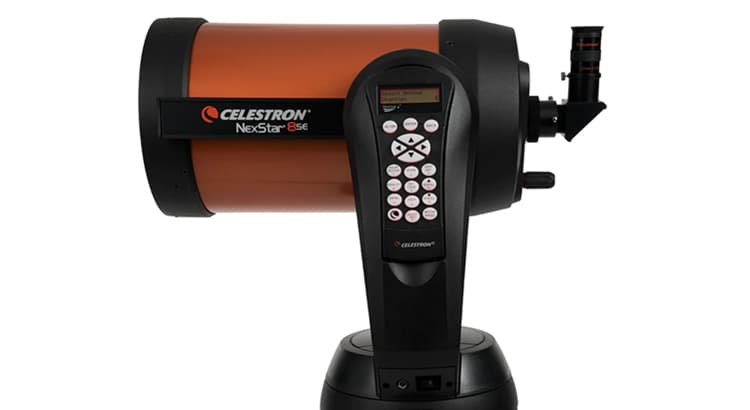For astronomy enthusiasts, the allure of peering into the cosmos and exploring distant planets and galaxies is a dream that comes to life through the lens of a telescope.
In this guide, we will unveil the top contenders for the title of the best telescope for viewing planets and galaxies.
Whether you’re a seasoned astronomer or a novice eager to embark on a celestial journey, choosing the right telescope is crucial for a captivating stargazing experience.
Celestron NexStar 8SE: Unveiling the Universe with Precision
Recognized for its advanced features and precision optics, the Celestron NexStar 8SE is a powerhouse for planetary and galactic observations.
With an 8-inch aperture and high-quality optics, this telescope provides crystal-clear views of planets like Jupiter and Saturn, showcasing their intricate details and mesmerizing rings.
Additionally, its computerized GoTo mount makes navigating the night sky a breeze.
Orion SkyQuest XT10g: Capturing Galaxies in Sharp Detail
If galaxies are your primary interest, the Orion SkyQuest XT10g is a telescope that stands out.
With a generous 10-inch aperture, this telescope gathers ample light to reveal the faint details of distant galaxies. Its motorized GoTo system and user-friendly features make it an excellent choice for both beginners and experienced astronomers seeking deep-sky exploration.
SkyWatcher S11220 Quattro Imaging Newtonian: Bridging Planets and Galaxies
For those seeking versatility in planetary and galactic observations, the SkyWatcher S11220 Quattro Imaging Newtonian is a remarkable choice.
Its large 8-inch aperture and fast focal ratio make it suitable for capturing both the fine details of planets and the extended structures of galaxies. Astrophotographers, in particular, appreciate its imaging capabilities for creating stunning celestial photographs.
Meade Instruments LX90 ACF: Planetary Precision with GPS Alignment
The Meade Instruments LX90 ACF combines planetary precision with user-friendly features.
Equipped with Advanced Coma-Free (ACF) optics, this telescope ensures sharp planetary views. Its GPS alignment system simplifies the setup process, allowing astronomers to spend more time observing and less time calibrating.
Explore Scientific ED127 Essential Series: Clarity for Planetary Enthusiasts
Planetary enthusiasts seeking exceptional clarity often turn to the Explore Scientific ED127 Essential Series.
This refractor telescope with a 5-inch aperture delivers high-resolution views of planets. Its apochromatic optics reduce chromatic aberration, providing astronomers with sharp and color-accurate images of the planets in our solar system.
Conclusion
Selecting the best telescope for viewing planets and galaxies involves considering factors such as aperture size, optics quality, and additional features like computerized mounts.
Whether you opt for the precision of the Celestron NexStar 8SE, the deep-sky capabilities of the Orion SkyQuest XT10g, the versatility of the SkyWatcher S11220 Quattro, the user-friendly Meade Instruments LX90 ACF, or the clarity of the Explore Scientific ED127, each telescope on this list offers a unique stargazing experience.
Explore the universe with the right telescope, and let the wonders of the cosmos unfold before your eyes.





